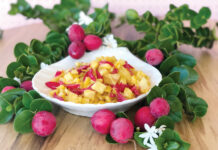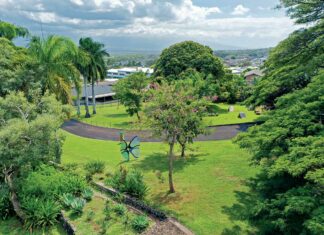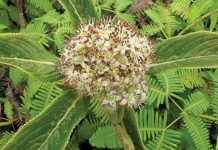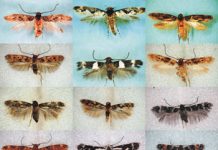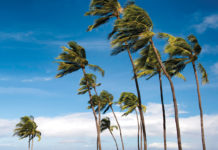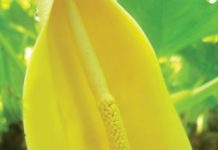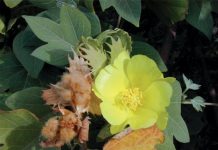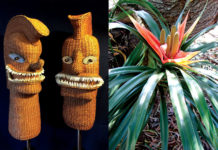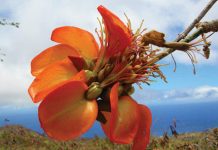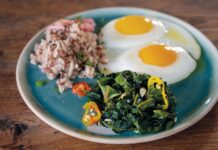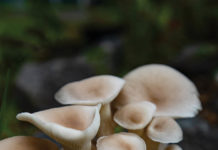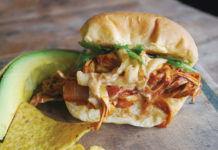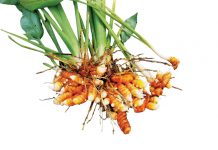Story by Shannon Wianecki | Photo by Forest & Kim Starr
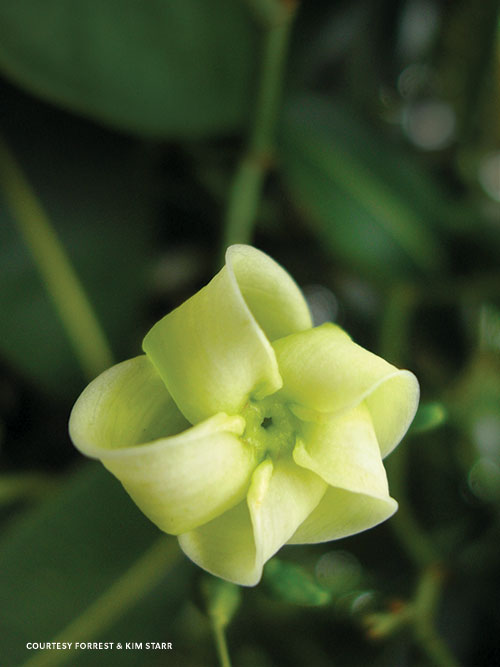
During May and June, lei makers work day and night sewing garlands for high school graduation ceremonies. Lucky graduates receive close to their weight in lei of every imaginable sort. Plumeria, the most common lei flower, has a sweet and powerful scent that’s become almost synonymous with Hawai‘i. But that popular blossom isn’t native to these Islands; it hails from Mexico and Central America.
Few people know that plumeria has a true Hawaiian cousin: hōlei. This rare tree species is endemic to the dry forests of East Maui—thus its scientific name, Ochrosia haleakalae, which refers to Maui’s tallest mountain. Like plumeria, hōlei has milky sap and five-petaled flowers. When dawn breaks across the southeastern shoulder of Haleakalā, the elegant little pinwheels that grow there unfurl and release their impressive perfume. Hōlei flowers smell wilder than plumeria, more potent for their size. Some people compare the crisp, clean scent to pīkake (another favorite lei flower, which hails from Southeast Asia), others to a mix of plumeria and white ginger.
Early Hawaiians held fragrance in high regard and undoubtedly coveted this exceptional bloom. Experts in lā‘au lapa‘au (plant medicine) chewed hōlei nuts into a pulp for sick infants and steeped the leaves and bark for curative steam baths. Carvers turned hōlei trunks and branches into canoe gunnels and rope-making tools. Artists used the tree’s bark, stems, and roots to color their kapa (barkcloth). When boiled, the bark yields a bright yellow dye.
Fewer than 400 hōlei trees exist in the wild. To see one—or catch a memorable whiff—you’ll have to visit Fleming Arboretum or volunteer for a service trip at the Auwahi Forest Restoration Project (Auwahi.org).
With luck—and a great deal of effort—these reforestation initiatives will pay off. Some day in the future, high school graduates may wear lei strung with hōlei flowers—an appropriate adornment for a Maui kama‘āina (child of the land).

